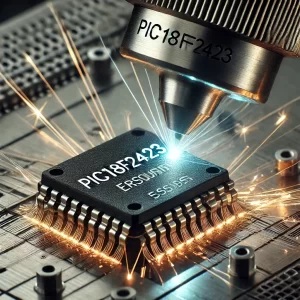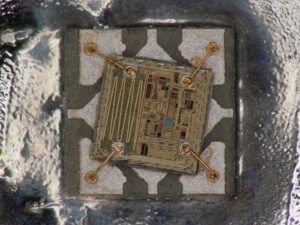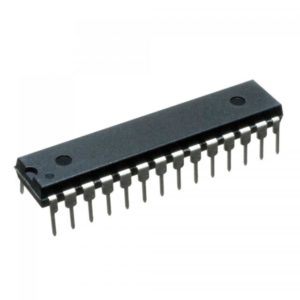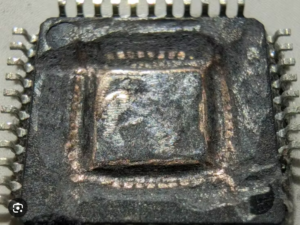 Break PIC18F2423 Protected Memory
Break PIC18F2423 Protected Memory
Break PIC18F2423 protected memory and recover embedded firmware in the format of binary file or heximal data from secured PIC18F2423 microcontroller by MCU cracking technique,

break PIC18F2423 protected memory and recover embedded firmware in the format of binary file or heximal data from secured PIC18F2423 microcontroller by MCU cracking technique,
In this blog, we explore advanced methods to Break PIC18F2423 microcontroller Protected Memory. We delve into reverse engineering techniques used to access the firmware, recover source code, and extract binary or hexadecimal data from locked microcontroller PIC18F2423. Whether you’re working to restore lost code or break into secured systems for legitimate research, this guide provides insights into the complexities of microprocessor PIC18F2423 security. Learn how to tackle firmware protection, analyze memory layouts, and apply reverse engineering principles to retrieve sensitive information embedded within the chip.

حافظه محافظت شده PIC18F2423 را بشکنید و سیستم عامل تعبیه شده را در قالب فایل باینری یا داده های هگزیمال از میکروکنترلر ایمن PIC18F2423 با تکنیک کرک MCU بازیابی کنید.
NANO Watt technology has been applied on PIC18F2423 Microcontroller which bring much more difficulties in the process of Break PIC18F2423 Protected Memory:
All of the devices in the PIC18F2423 family incorporate a range of features that can significantly reduce power consumption during operation. Key items include:
• Alternate Run Modes: By clocking the controller from the Timer1 source or the internal oscillator block, power consumption during code execution can be reduced by as much as 90% after Recover PIC MCU Microchip 16LF506 Firmware.
• Multiple Idle Modes: The controller can also run with its CPU core disabled but the peripherals still active after Clone IC firmware. In these states, power consumption can be reduced even further, to as little as 4% of normal operation requirements.
• On-the-Fly Mode Switching: The power-managed modes are invoked by user code during operation, allowing the user to incorporate power-saving ideas into their application’s software design before Recover PIC MCU Microchip 12F510 Firmware.
• Low Consumption in Key Modules: The power requirements for both Timer1 and the Watchdog Timer are minimized.
All of the devices in the PIC18LF2423 family offer ten different oscillator options, allowing users a wide range of choices in developing application hardware. These include:
• Four Crystal modes, using crystals or ceramic resonators.
• Two External Clock modes, offering the option of using two pins (oscillator input and a divide-by-4 clock output) or one pin (oscillator input, with the second pin reassigned as general I/O).
• Two External RC Oscillator modes with the same pin options as the External Clock modes.
• An internal oscillator block which provides an 8 MHz clock and an INTRC source (approximately 31 kHz) for the purpose of Copy Encrypted Microchip PIC18F2330 Heximal, as well as a range of six user-selectable clock frequencies, between 125 kHz to 4 MHz, for a total of 8 clock frequencies. This option frees the two oscillator pins for use as additional general purpose I/O.

MCU क्रैकिंग तकनीक द्वारा सुरक्षित PIC18F2423 माइक्रोकंट्रोलर से बाइनरी फ़ाइल या हेक्सिमल डेटा के प्रारूप में PIC18F2423 संरक्षित मेमोरी को तोड़ना और एम्बेडेड फर्मवेयर को पुनर्प्राप्त करना,
• A Phase Lock Loop (PLL) frequency multiplier, available to both the High-Speed Crystal and Internal Oscillator modes, which allows clock speeds of up to 40 MHz from the HS clock source. Used with the internal oscillator, the PLL gives users a complete selection of clock speeds when Decrypt Microchip PIC18F2321 MCU Heximal File, from 31 kHz to 32 MHz, all without using an external crystal or clock circuit.

